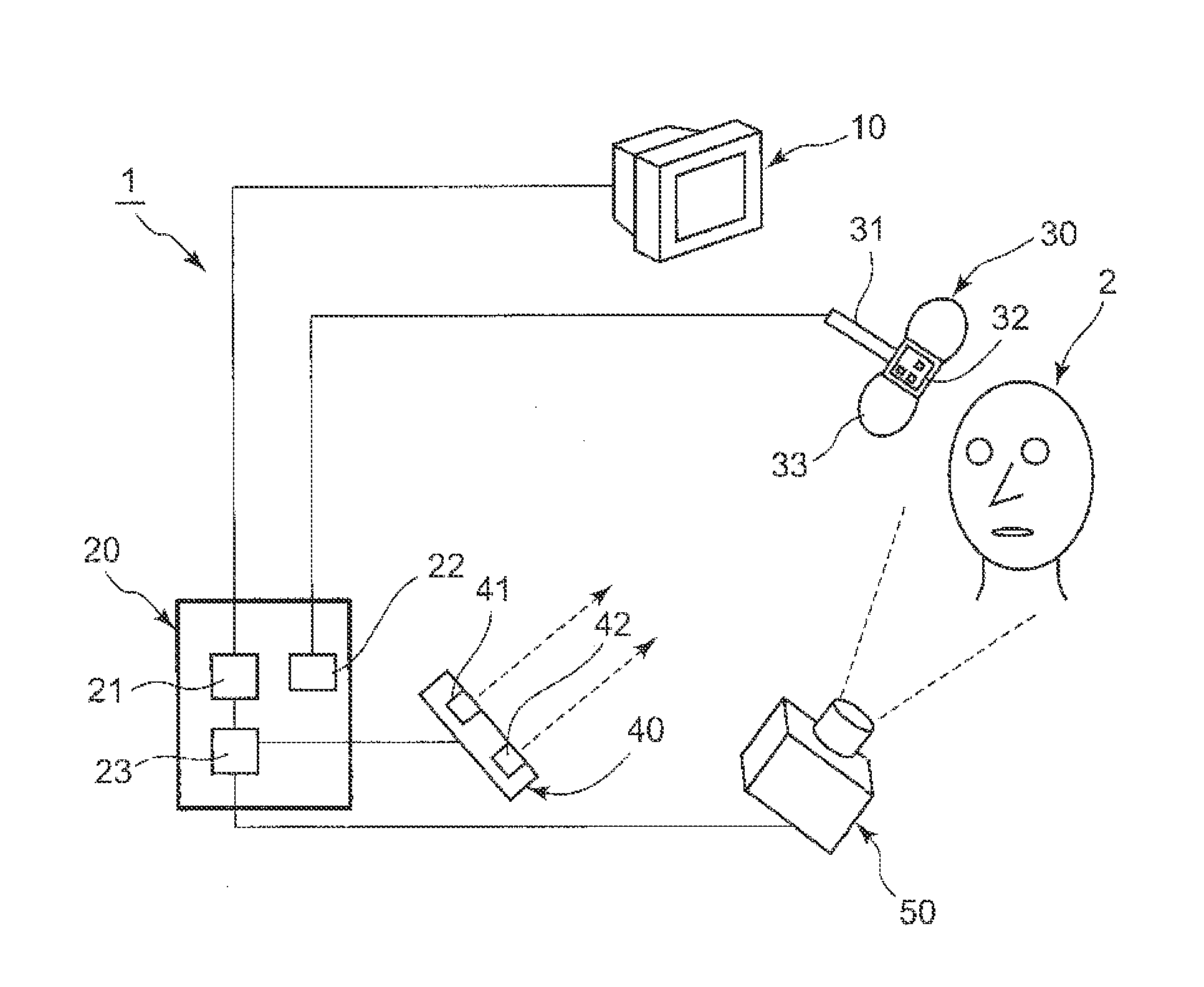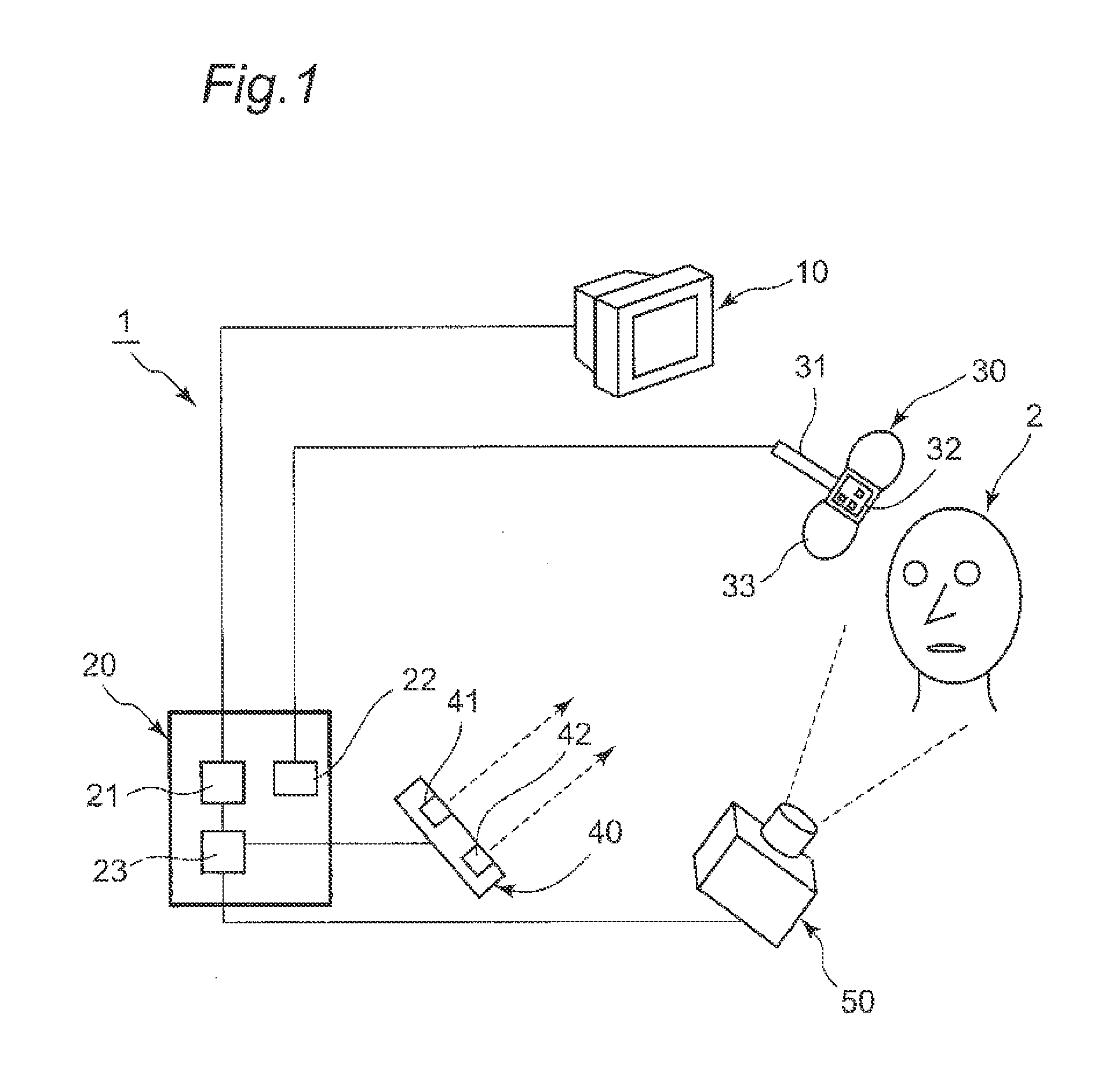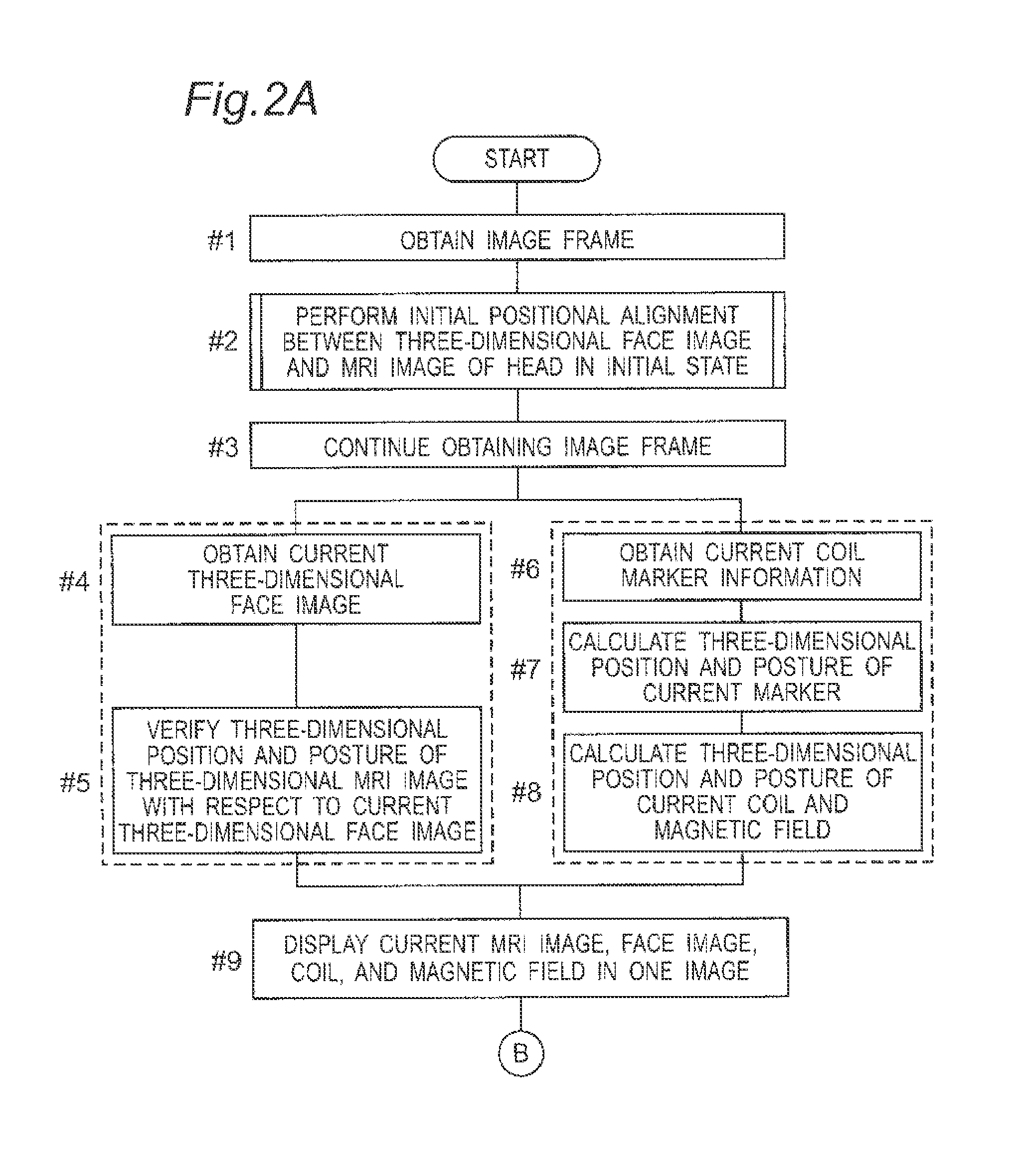Image data processing device and transcranial magnetic stimulation apparatus
a transcranial magnetic stimulation and data processing technology, applied in image enhancement, therapy, instruments, etc., can solve the problems of delicate differences in the optimum stimulating portions of individual patients, not always effective medicine, etc., to facilitate the movement operation, reduce the strain of the subject, and reduce the bother
- Summary
- Abstract
- Description
- Claims
- Application Information
AI Technical Summary
Benefits of technology
Problems solved by technology
Method used
Image
Examples
Embodiment Construction
[0058]Hereinafter, embodiments of the present invention will be described, taking a case applied to transcranial magnetic stimulation treatment as an example, with reference to the accompanying drawings. It should be noted that an image data processing device according to the present invention may be effectively applied to a region on a subject (e.g., a patient or an examinee) other than the head when providing a magnetic stimulation treatment for treating various diseases.
[0059][Outline of Configuration of Transcranial Magnetic Stimulation Apparatus]
[0060]FIG. 1 is an explanatory diagram schematically illustrating an outline of a configuration of a transcranial magnetic stimulation apparatus according to the embodiments. A transcranial magnetic stimulation apparatus 1 is for providing a treatment to a specific portion (optimum stimulating portion) of a head 2h of a subject 2 (e.g., the patient or the examinee) by applying magnetic stimulation.
[0061]As illustrated in FIG. 1, the tra...
PUM
 Login to View More
Login to View More Abstract
Description
Claims
Application Information
 Login to View More
Login to View More - R&D
- Intellectual Property
- Life Sciences
- Materials
- Tech Scout
- Unparalleled Data Quality
- Higher Quality Content
- 60% Fewer Hallucinations
Browse by: Latest US Patents, China's latest patents, Technical Efficacy Thesaurus, Application Domain, Technology Topic, Popular Technical Reports.
© 2025 PatSnap. All rights reserved.Legal|Privacy policy|Modern Slavery Act Transparency Statement|Sitemap|About US| Contact US: help@patsnap.com



